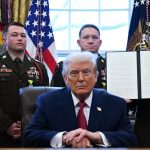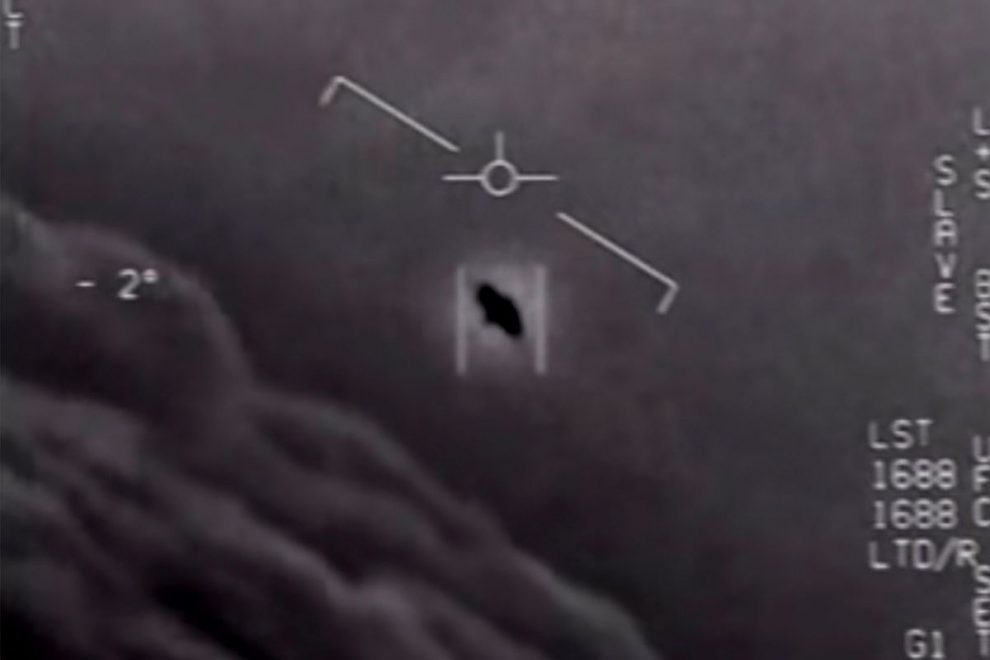Attached to the 5,593-page coronavirus relief bill the president signed on Sunday is an unexpected proposition: a request for the Pentagon to brief Congress on all it knows about unidentified flying objects within 180 days.
Though not in the text of the law itself, a comment from the Senate intelligence committee, attached to a portion of the package funding intelligence operations, asks the Director of National Intelligence to consult with other top defence officials and spy chiefs to submit a report on “unidentified aerial phenomena” (UAP), the government argot for UFOs, within six months.
The briefing will cover “observed airborne objects that have not been identified” and feature “detailed analysis of unidentified phenomena data collected by: a. geospatial intelligence; b. signals intelligence; c. human intelligence; and d. measurement and signals intelligence,” according to the request.
A Defense Department spokesperson told The New York Post, which reported on the news, that it was aware of the request.
“We are aware that the Senate Select Committee on Intelligence committee report on the Intelligence Authorization Act for fiscal 2021 included a requirement for the Director of National Intelligence, in consultation with the Secretary of Defense, to submit a report on unidentified aerial phenomena (UAPs) within 180 days of enactment.”
Though it’s not law, former officials said the request was a new high watermark when it comes to the government publicly exploring the existence of UAPs.
“It’s now fair to say that the request for an unclassified report on the UAP phenomenon enjoys the support of both parties in both Houses of Congress,” Christopher Mellon, former Deputy Assistant Secretary of Defense for Intelligence and former staff Director of the United States Senate Intelligence Committee, told The Debrief, a science and defense news site. “Assuming the Executive Branch honors this important request, the nation will at long last have an objective basis for assessing the validity of the issue and its national security implications. This is an extraordinary and long overdue opportunity.”
Among the many strange political developments during the Trump years has been a slow public thaw in the government’s secrecy surrounding UFOs. In 2017, the New York Times reported on the Pentagon’s Advanced Aerospace Threat Identification Program, an effort to investigate UAPs encountered by military service members, which was eventually shuttered but continued under other names within various parts of the military intelligence apparatus.
In early 2020, the Defense Department went so far as to release verified videos of UAPs that Navy pilots had encountered, and by mid-August, the Pentagon formally acknowledged it was still investigating such incidents, under a new Unidentified Aerial Phenomena Task Force.
“The Department of Defense established the UAPTF to improve its understanding of, and gain insight into, the nature and origins of UAPs,” it said in a statement. “The mission of the task force is to detect, analyze and catalog UAPs that could potentially pose a threat to U.S. national security.”
National security, more than a desire to probe the great beyond, seems to have been the motivating factor to keep publicly exploring these phenomena.
Senator Marco Rubio, a Florida Republican who chairs the intel committee who made the request, told a Miami CBS affiliate in July he was concerned UAPs could be connected to “some technological leap” from US adversaries like China or Russia.
“Maybe there is a completely, sort of, boring explanation for it,” he said. “But we need to find out.”
Story cited here.
























